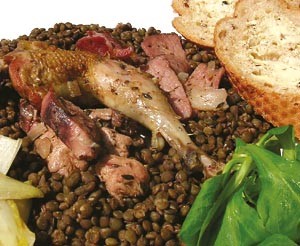Buying game

The old adage there are two sides to every story is prone to overuse, but it appears to be true when used by the majority of the shooting community against gamedealers. I dont think I attended a shoot last season where I didnt hear a Gun, keeper, picker-up or beater bemoaning the abysmal price paid for game by dealers. More recently, Graham Downing questioned the value of deer carcases and went so far as to say that someone must be making a killing somewhere (View from the East, 14 February). Having worked in the meat and game industry for more than two decades, I think it is only fair to address all the facts. A few months ago, I visited a respected gamedealers establishment and came across a fine Chinese water deer carcase, a relative youngster still boasting its milk teeth.
The dealer admitted to having paid only £8 for the beast, a derisory sum for an animal that would provide a gastronomic treat. As an employee skilfully skinned and butchered the carcase, we realised the true value of the purchase. The deer had been shot by an experienced stalker through the thoracic cavity and the resulting damaged caused by the .243 bullet had rendered the animals forequarters inedible, a fact later confirmed by an authorised meat inspector who was visiting the premises. This left the dealer with only the haunches and the saddle as saleable commodities. So, having taken into consideration the hour of his employees time and the frightening expense involved in running an EC-approved game processing plant, I began to understand why the proprietor had to be so circumspect when purchasing his stock. Despite this, my own feeling is that humane deer management should take precedence over carcase values and there is still much to be said for the certainty of the heart and lung shot.
The value of gamebirds has long rankled with shoot captains and commercial shoot managers. Look at this, said our keeper, as he showed me a gamedealers receipt for a January collection of game. Sixty pence a brace for French partridges and 90p a brace for long tails. The dealer sells pheasants oven-ready at £4 a brace to the trade and the butchers knock them out at £6 a brace, while the supermarkets want £10. How can they justify that? On paper it looks a tidy mark-up for all concerned, but once again the reality is rather different. My old boss, a village butcher, used to buy a few dozen brace of pheasants from a local farm shoot. However, after several years of boring plucking and unsavoury dressing sessions, the boss decided to buy-in oven-ready game from a gamedealer, and with good financial reason.
The grade A bought-in game cost £4.50 a brace and when sold at £6 a brace had earned an easy, if slim, 25 per cent profit margin. However, a profit was something that he never saw from his in-the-feather purchases, for out of every 10 brace we processed by hand, only six could be sold as grade A. Hard-mouthed dogs and close-range shooting were mostly to blame for the valueless downgrades, and these losses, along with our overtime bill, usually put paid to any profit the processed birds might have made. At best the boss did little better than cover his costs.
So, before you think badly of your local gamedealer when you next have dealings with him, think of the challenges that confront him as he strives to earn a living. Bureaucracy, uncertain markets and ever-more stringent hygiene requirements are only a few of the problems facing our gamedealers, processors and butchers.








